Pentagon plans for the development of military air defense and missile defense
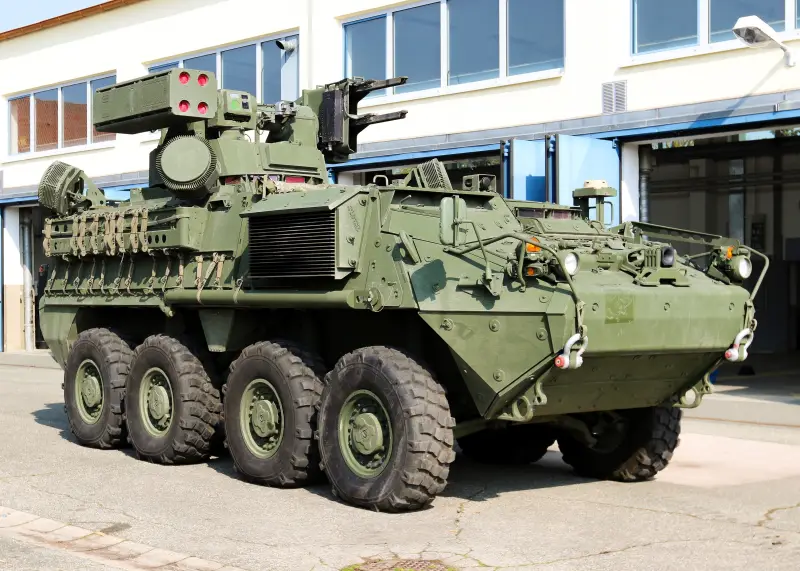
Anti-aircraft missile and gun system M-SHORAD, supplied to US Army units. Photo by US Department of Defense
The Pentagon is planning a major restructuring of the organizational structure of the ground forces. By changing the composition and number of formations and units, they are going to make the army more effective in solving the entire range of expected tasks. For example, in connection with the growing threat from air attack weapons, it is proposed to rebuild and strengthen military air and missile defense.
Goals and objectives
On February 28, the Pentagon published the document “Army Force Structure Transformation,” which described the current situation and its features, as well as the main plans for improving the ground forces. In the near future, all these ideas will be worked out in detail, turned into a real reform program, which will then be approved and accepted for implementation.
The authors of the document recall that since September 11, 2001, the main task of the US Army has been the fight against terrorism. Such tasks had their own characteristics and influenced the appearance and capabilities of the armed forces in general and ground forces in particular. However, in recent years the situation in the world has changed, and now the army has to confront the full-fledged armed forces of potential opponents. This makes new demands and forces the army to be rebuilt again.
The proposed transformation program provides for a reduction in the number of ground forces with a simultaneous restructuring of the organizational structure. By improving the overall system, optimizing the distribution of staff units and other measures, it is planned to maintain the overall level of combat capability and at the same time strengthen individual components of the army.
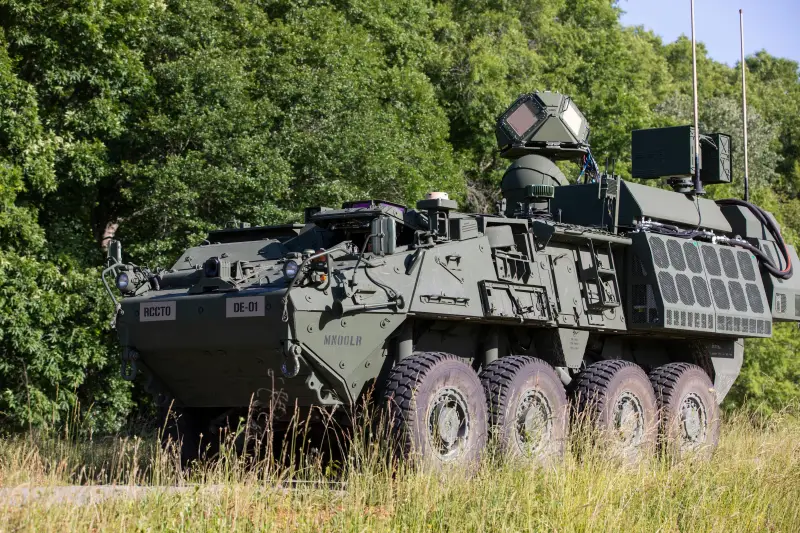
The DE M-SHORAD prototype is a self-propelled near-zone air defense laser system. Photo by US Department of Defense
The structure of the troops will create five “multi-medium operational groups” Multi-Domain Task Forces (MDTF). Such formations will unite units and formations of different types of troops and will be able to conduct various activities or conduct combat operations using all available means and weapons. The MDTF will be assigned strike and defensive functions.
At the same time, they are going to update the existing weapon and equipment, as well as to develop and adopt promising models. Several important programs of this kind are being implemented right now, and their progress must be adjusted in accordance with the new army development plans.
Based on the results of all such events, by FY 2029. the total number of ground forces personnel will reach the level of 470 thousand people. with some change in the number of civilian personnel. At the same time, the ability to counter a developed and well-equipped potential enemy must increase, both in the context of defense and when solving strike missions.
Air defense-missile defense issues
The Pentagon notes that in the new conditions, the issue of air and missile defense is once again acquiring special importance. Potential adversaries of the United States, represented by Russia and China, have a wide range of different aviation and missile systems with different characteristics. The US Army must be prepared to repel attacks using them, as well as respond to them.
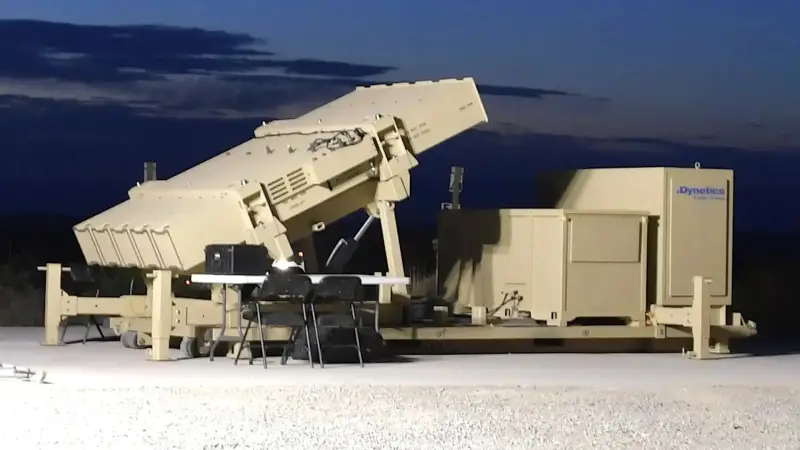
Launcher of the experimental Enduring Shield air defense system. Photo by Dynetics
The published plan provides for strengthening military air defense through the creation of new units with different equipment and capabilities corresponding to current threats. In general, it is proposed to maintain a layered approach to the formation of air defense and missile defense, but at the same time supplement the existing system with new means that can protect troops from a greater number of threats.
In the structure of the ground forces, it is proposed to form four new air defense battalions with “the ability to protect against fire from indirect positions” Indirect Fire Protection Capability (IFPC). They will receive short- and medium-range anti-aircraft weapons capable of intercepting various UAVs, cruise missiles, as well as cannon and rocket artillery shells.
The IFPC battalions, as well as the air defense battalions attached to the ground divisions, will have a total of nine specialized batteries to combat small drones. They will need their own equipment - anti-aircraft systems and suppression means.
To counter manned and unmanned aircraft operating at low altitudes, Maneuver Short Range Air Defense (M-SHORAD) will be strengthened. Four newly created battalions within existing formations will be equipped with such systems.
It is noted that such a plan for the development of military air defense is not final. Depending on future events and emerging threats, it may be adjusted. It is possible to increase the number of required anti-aircraft units and formations, develop and implement new systems, etc.
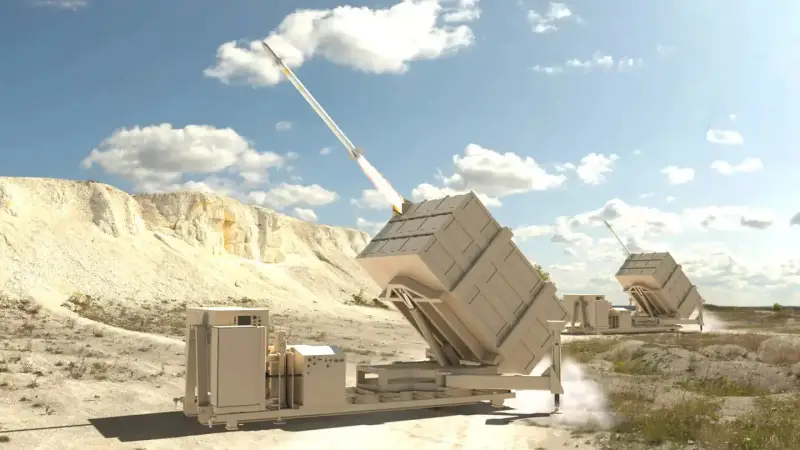
Enduring Shield during combat work. US Department of Defense graphics
Material part
The review “Transformation of the structure of the armed forces” does not name specific types of equipment and weapons through which military air defense will be strengthened. However, available information about the latest developments commissioned by the Pentagon allows us to imagine what systems we are talking about. In addition, it becomes clear what capabilities air defense will gain thanks to such products.
To strengthen military air defense and missile defense with minimal costs for rearmament and logistics, a promising air defense system under the code Enduring Shield is currently being developed. In the near future, these very complexes may become part of IFPC battalions and provide protection against small air attack weapons and missiles.
Enduring Shield is a stationary anti-aircraft system with an AN/MPQ-64 Sentinel detection radar, a unified combat control system and four (typical) guided missile launchers. At the first stage it is planned to use the aviation AIM-9X Sidewinder, and in the future a new surface-to-air product will appear. The launcher can carry up to 10-15 transport and launch containers with missiles. The interception range, depending on the missile used, should be 15-20 km.
Batteries for combating small UAVs may receive the same equipment or another model with similar capabilities. In addition, several promising air defense systems with a compact lightweight missile optimized for intercepting drones are currently being developed. In addition, not only air defense systems, but also electronic warfare systems can receive new types of batteries. Active work is also underway in this area.
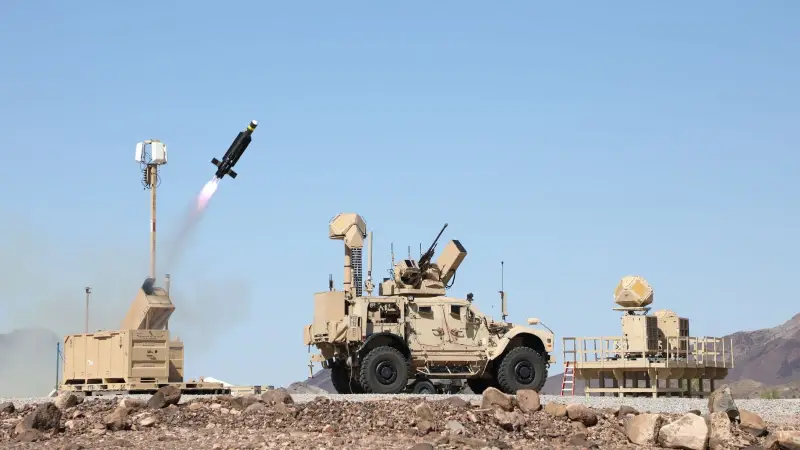
Experienced Coyote air defense system in stationary and mobile versions. Photo by Raytheon
Air defense units of the M-SHORAD type will most likely receive a ready-made model of the same name. Several years ago, the Pentagon began deploying the M-SHORAD missile and gun system, built on a Stryker wheeled chassis. This product is equipped with a 30 mm automatic cannon using programmable fuse projectiles and also carries FIM-92 Stinger missiles. Such an air defense missile system will be able to hit air targets at ranges of up to 4-4,5 km.
It is quite possible that, in parallel with the restructuring of the troops and the creation of new air defense units, promising anti-aircraft systems with missiles and guns will be developed. Such products will be able to enter service after the completion of the formation of new units and subunits, both to strengthen them and as part of future rearmament.
Overdue transformations
Thus, the Pentagon is trying to monitor the general situation in the world and respond to its changes. The US leadership decided that now the country's main potential adversaries are Russia and China. They have developed and well-equipped armies, and this must be taken into account when improving the American armed forces.
The Pentagon is developing and implementing various programs aimed at continuing military development and improving all the main indicators of the armed forces. According to the latest plans, a special place in them will be occupied by the process of optimizing and improving air and missile defense. The first steps in this direction are already being taken, and all the desired results will be achieved over the next few years.
Information